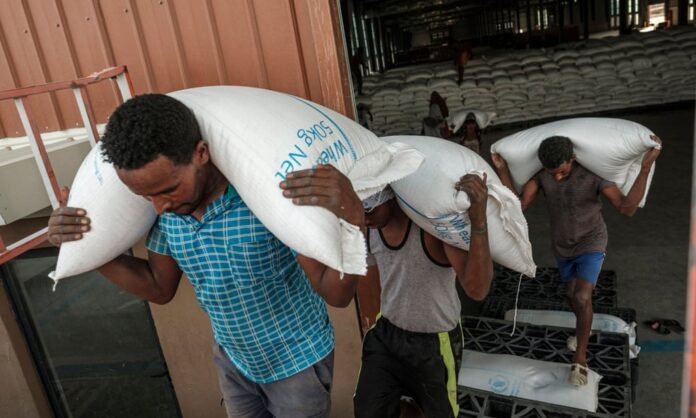More than a quarter of a billion people around the world faced severe hunger last year amid a worsening global food crisis that threatens to slide into famine for millions.
The war in Ukraine, which has raised food prices globally, was one key factor, and other conflicts have also wreaked terrible damage on people’s ability to find or afford food. The lingering impacts of the Covid-19 pandemic also played a role, as did the changing climate.
Last year was the fourth year in a row in which the number of people facing food crises increased substantially, according to data released by the UN Food and Agriculture Organization on Wednesday.
The data, contained in the 2023 edition of the annual Global Report on Food Crises, shows a world gripped by an increasingly widespread and urgent food crisis. In 2022, at least 258 million people in 58 countries faced “acute food insecurity”, defined as hunger so severe that it poses an immediate threat to people’s livelihoods and lives.
Acute food insecurity is less severe than famine, which is declared when people are dying of starvation. The number was up sharply from 193 million people in 53 countries in 2021, though the increase is partly explained by an increase in the populations analysed.
More than 35 million children under five had suffered from wasting in the 58 countries covered, of whom more than 9 million cases were found to be severe. Wasting in childhood from acute malnutrition can have lifelong consequences for physical and mental development.
Rein Paulsen, the director of the FAO’s office of emergencies and resilience, said: “The latest figures on the global acute food insecurity situation paint a very concerning picture. They tell us that now for four consecutive reports, four consecutive years, we have a situation that’s getting worse: the prevalence of populations facing acute food insecurity at crisis levels or worse have increased for the fourth consecutive year.
“And in 2022, this means that over a quarter of a billion people, 258 million people in 58 countries/territories, were in a situation of acute food insecurity. In practical terms, we are talking about vulnerable households whose lives and livelihoods are being threatened.
”While some of the areas facing the most severe crises are failed or failing states, or embroiled in regional conflicts, including the Democratic Republic of the Congo, Ethiopia, Afghanistan, Yemen, Syria and Sudan, others are major developing economies, such as Nigeria and Pakistan.
The FAO estimates that weather and climate extremes, which have been made worse by the climate crisis globally, were the primary driver of acute food insecurity in 12 countries, covering 57 million people. Pakistan saw severe flooding last year, afflicting an estimated 33 million people, which scientists have found was made much more intense by human changes to the climate.
Drought in the Horn of Africa, which scientists found would not have happened if not for the climate crisis, has been a cause of food insecurity for tens of millions of people.
Russia’s invasion of Ukraine, a major producer of wheat, maize and sunflower oil, led to a steep rise in food prices last year, which reached record levels. Although the index of average prices has now returned nearly to the levels seen before the war, the impacts are still being felt and there is still serious disruption to exports.
Paulsen called on governments to act on the multiple causes of the global food crisis. “This report is vitally important because it tells decision makers, it tells donors, it informs operational agencies and governments about the need for urgent action, scaled-up action, and the right type of action to address the situation,” he said.
Help for afflicted countries to produce more of their own food locally is usually better than emergency supplies shipped in from overseas, but this kind of help is often lacking in crisis situations.
“Time-sensitive agricultural interventions are proven to be the most cost-effective way to respond to acute food insecurity for the vast majority of the people that are covered by this report,” Paulsen said. “The challenge that we have is the disequilibrium and the mismatch that exists between the amount of funding that’s given, what that funding is spent on, and the types of interventions that are required to make a change.
“Globally, we know that only 4% of all the funding that goes to food security interventions in food crises contexts, in the contexts that are covered by this report, goes to time-sensitive agricultural interventions. That’s something that needs to change if we really want to move the needle on the worsening trend in these numbers that exist.”








